
Most of us would love to have a big garden in the backyard, brimming with fresh fruits and veggies we can pluck straight from the earth and feed our kiddos. To some of us (ahem, Joanna Gaines), that kind of living comes naturally. But for the rest of us, keeping a basil plant alive in our kitchen is a victory in and of itself. This is especially true for anyone raising tiny humans while living in a home with limited (or nonexistent) outdoor space.
The good news is that indoor kitchen gardens are becoming increasingly popular — for urban dwellers, as well as those of us with … well, not-so-green thumbs. That's because growing vegetables indoors is easier than it looks, which means graduating from windowsill herbs to some good, hearty vegetables is attainable. It's also incredibly cost-efficient, and a smart way to cut down on weekly grocery costs.
There's more than one way to go about it, too. First things first, consider whether using sturdy planters would be best, or if something like an indoor vegetable gardening kit (like this one, which shows the roots as they grow) fits the space and the plant better. Just try not to go smaller than a pot that's 6 inches deep and 6 inches wide, according to gardening expert Amy Pennington. There also has to be plenty of light so the vegetables can do their growing — so park them on the ledge of a large bay window or consider a vegetable tower. A tiered vegetable plant stand may also be the way to go. And if natural sunlight's hard to come by, get a portable LED light that'll give those veggies what they need.
Pennington also recommends these four watering rules: Water regularly, water deeply, (enough so that some of it seeps out of the pot's drainage holes), water with the seasons (which means a bit more in warmer months), and do not over-water. That last tip can be trickier than it seems, but Pennington advises gardeners to check the soil for dryness before any watering, to prevent water-logging the plant. As for what vegetables grow best indoors? Scroll on for some favorites that surprisingly flourish in kitchen gardens.
Cauliflower

Ah yes, everyone's favorite vegetable of the moment. Right now, cauliflower is probably more trendy than kale. (Who would have thought??) There's cauliflower rice, cauliflower pizza crust, cauliflower tots … I could go on and on.
Believe it or not, that lovely cruciferous veg can be grown indoors, but it does need a closer eye than most. The Old Farmer's Almanac recommends that it be grown in temperatures ranging in the 60s, so that it doesn't prematurely "button," or grow small button-sized heads instead of one large one.
Onions

Onions make almost any dish better, whether they're added as a topping to pizza, mixed into a yummy soup, or straight-up battered and fried (hello there, bloomin' onion).
It's possible to grow them at home year-round using seeds or scraps from other onions — just make sure the planter is big enough for a bulb to spread out and grow deep into the soil. Once their green stalks have grown to be 6 inches tall, they're ready to be harvested (and enjoyed!).
Beets

Beets are packed with essential vitamins and minerals, are low in calories, and according to Healthline, have been linked to lowering blood pressure. They're also surprisingly simple to grow indoors. Start by soaking the beet seeds overnight, and then plant them in a perforated flat that's about 2-3 inches deep, so they have plenty of room to grow. (Read more in-depth instructions over on SF Gate.)
Before long, the soil will be full of gorgeous purple beets that would make Dwight Schrute proud!
Lettuce

Lettuce is one of the easiest vegetables to grow inside, whether it's iceberg or romaine. Plus, this leafy veg is super healthy and incredibly versatile — it's perfect for making salads or loading into a wrap or sandwich for lunch.
Some seeds grow better inside (like "Arctic King" and "Tom Thumb"), so just do a little research first before getting started. Then consult an easy-to-follow guide on how to grow lettuce indoors, and voila — get ready to see a beautiful head of lettuce in just about a month's time.
Bell Peppers

Bell peppers grow just as well indoors, and are larger in size, which can help give cooks more bang for their buck. Plus, these vitamin C-packed veggies can be added to everything from soups to omelets, making them pretty versatile.
They do require a bit more care, though — especially red peppers, which ideally are started in soil warmed to 70 degrees Fahrenheit. (Talk about high maintenance!) The Indoor Gardens has a quick how-to that will demystify some of the process.
Spinach

The dark, leafy greens of spinach come packed with vitamins K, A, and B2 (just to name a few), and plenty of iron — which is probably why Popeye always sang its praises. It also aids in digestion, according to Live Science, and may help lower the risk of heart disease.
In other words: It's pretty healthy stuff. And growing a decent batch in an indoor planter isn't so hard, either. In fact, the veggie can withstand growing in temperatures as low as 20 degrees Fahrenheit and as high as 90, and as long as it's grown in a roomy pot with good soil and regular waterings.
Broccoli
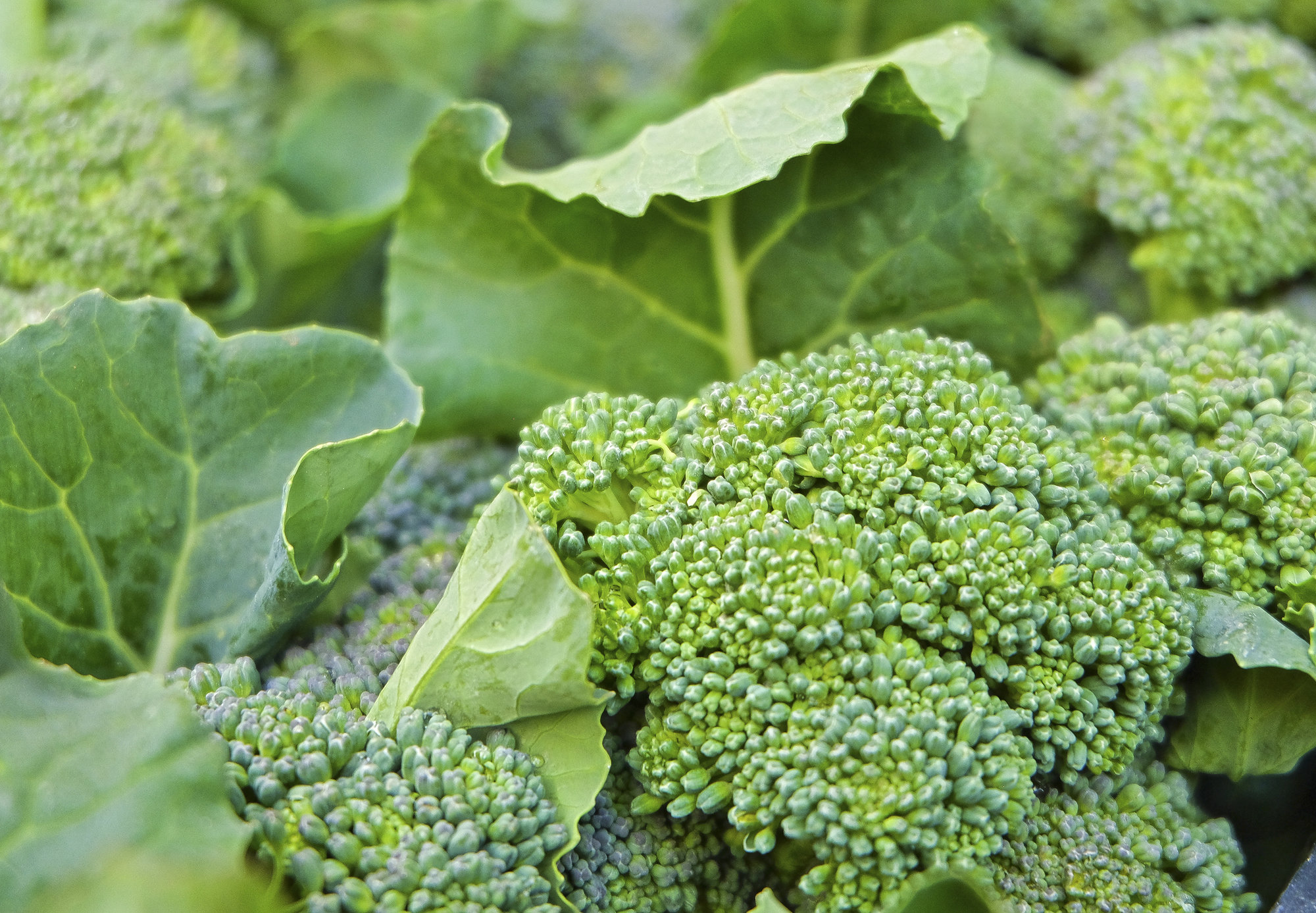
Broccoli might be one of the heartiest, most versatile vegetables out there, and it is delish. Sauté it with garlic and olive oil, throw it in a stir-fry, add it to soups, or use it in a cheesy casserole. Whatever you do with broccoli, it's guaranteed to amp up any dish. Plus, here's a little known fact: Broccoli is packed with protein, making it a great option for vegetarians or anyone who wants to leave meat out of a dish.
UrbanFig says growing broccoli indoors isn't the easiest, but it's definitely doable. You just need a little patience.
Potatoes

Who doesn't love a potato? This yummy and filling veggie is the center of so many of our favorite comfort foods, from mashed potatoes to loaded baked potatoes to even potato chips. (Mmm … my mouth is watering.) And while they're constantly knocked as a "bad carb," they do have plenty of nutritious benefits, too — including vitamin C, potassium, and fiber.
Potatoes can be grown in an indoor pot with plenty of soil, or even in a water glass or jar, which makes for a fun little science experiment for the kids. Got a batch of potatoes that's starting to sprout roots and looks like it's ready to be tossed in the garbage? Not so fast. Those wonky-looking taters might just be prime for replanting.
Scallions

While they may often be mistaken for herbs, scallions are actually vegetables in the onion family, that can either be cooked or eaten raw. Chop them up, sauté them, sprinkle them over a baked potato, or add them to a stir-fry. They are super yummy and add a little kick to any dish.
The best way to grow scallions indoors is to start with scraps from an existing bunch, and either plant the white stems in soil or in a water glass. Then stick them in a spot that gets plenty of sunlight (preferably, six hours of sunlight a day).
Hot Peppers

For newbie gardeners who aren't afraid of adding a little kick to their meals, growing hot peppers indoors might be right up their alley. Save seeds from the spicy veg to germinate in indoor pots; then watch as colorful yellow and orange peppers begin to sprout. They'll grow in plastic pots or grow trays, and will sprout with relative ease, so long as they're set in a warm, well-lit area of the house.
Alfalfa Sprouts
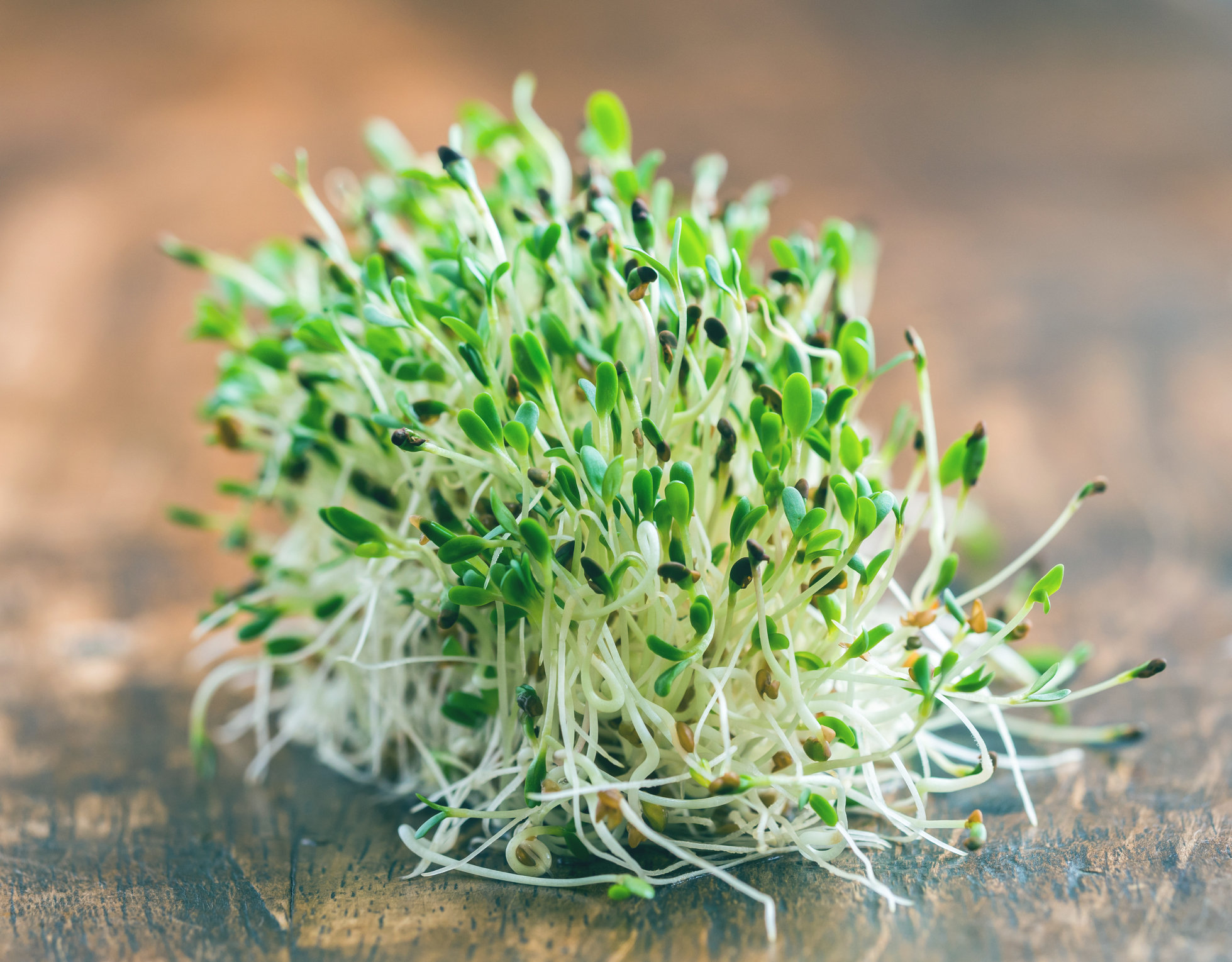
When we think of vegetables, our minds don't immediately go to alfalfa sprouts. But this tiny yet nutritious vegetable is a great way to get in lots of good nutrients, with vitamins that can help prevent iron deficiency and build strong bones. Plus, they're low in calories, which helps them aid in weight loss. Simply toss them into vegetable wraps or sandwiches as an alternative to lettuce or spinach.
The easiest way to grow them is to use a glass mason jar — believe it or not, they can be grown and harvested within days!
Radishes

This underrated veg is a breeze to grow indoors — and the best part is, it doesn't take too long to get the finished product. According to the DIY Network, they like cool soil and lots of moisture; but be careful to put them in a pot with plenty of drainage, so they don't get water-logged.
They'll reach maturity in just three to four weeks, and be ready to toss into salads or sliced and eaten raw with other veggies and dip, offering a great source of vitamin C, potassium, folate, and riboflavin.
Dwarf Beans

Dwarf beans are a smaller kind of string beans, which tend to grow better indoors because they aren't grown on a vine. They're also loaded with vitamins and plenty of fiber, and oh, are they delicious.
But here's one of their best selling points: The beans are ready to eat in just 45 to 65 days, since they can be picked before reaching full maturity; so newbie gardeners don't have to have too much patience before seeing their crop come to life.
Carrots
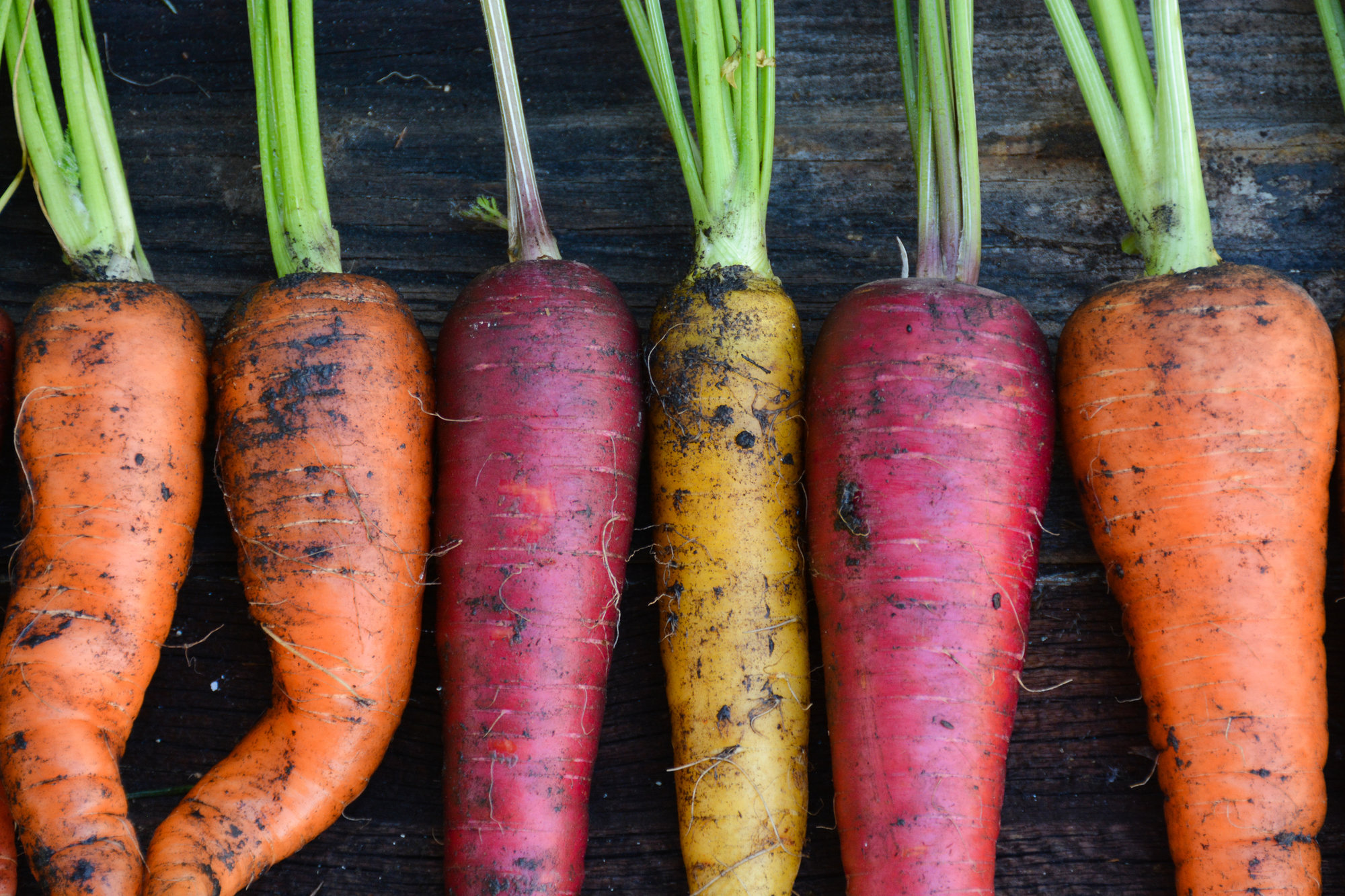
Carrots are loaded with beta carotene, an antioxidant that plays a vital role in overall health and wellness. They're also insanely yummy too (and one of the few veggies kids won't actually fight you on at dinnertime).
But the best part about carrots? They're actually easier to grow indoors than out, since they thrive on moisture, which can be easier to keep up with an indoor garden.
Kale

All hail, the mighty kale. It's become pretty trendy in recent years, thanks to a resurgence brought back largely by the kale chip craze. But that's definitely a good thing — the vegetable, which is a member of the cabbage family, is filled with vitamins A, C, K, and B6. In fact, it's actually been called one of the healthiest and most nutritious foods in existence. (Seriously.)
When it comes to growing the leafy, cruciferous veg, it grows quicker when placed under LED lights inside rather than outside, though some gardeners may choose to start it inside and then move it outdoors. When looking for kale varieties, The Spruce suggests picking "Hanover Salad," which is known to be a fast-grower.
Swiss Chard

For kale fans looking to branch out, Swiss chard offers that same green leafy goodness with tons of nutrients like vitamin A, calcium, and magnesium. (No wonder it's been called the ultimate superfood.)
According to SF Gate, while Swiss chard is usually grown in outdoors, it fares well indoors too; but make sure it has ample sunlight, as the plant needs at least six hours of good sunlight a day to reach its full potential.
Arugula

Bored of the same old chopped romaine or iceberg wedge salads? Switch things up with arugula, lightly tossed in lemon, vinegar, and olive oil.
The good news is, this leafy vegetable is a cinch to grow inside. In fact, some have even called it the easiest vegetable to grow indoors. That said, there are a few basics to know, like the fact that it grows best north-facing windows and lower temps. Check out The Kitchn's easy guide to growing arugula before getting started.
Tomatoes

There's nothing like a ripe, juicy tomato, is there? Tomatoes have given us everything from pizza to spaghetti sauce to … honestly, most of our favorite dishes involve them. They're also packed with antioxidants, and have been linked to lowering the risk of heart disease and cancer.
Typically, they're grown in an outdoor vegetable garden on vines, but tomatoes can also flourish indoors, if provided the right amount of light and kept in temperatures no lower than 65 degrees.
Ginger

Ginger doesn't usually spring to mind when talking about vegetables; probably, because we usually treat it like an herb or a spice. The part we use to cook or season is the root of a larger flowering plant, and aside from its flavorful punch, it's also loved for its many antioxidants, which can bring health benefits to any recipe.
To grow it indoors, it's best to use a living ginger root and soak it overnight before planting it in a pot with rich, well-draining soil. (Check out New England Today's full tutorial before getting started.)
Peas

The key to successfully growing peas indoors starts with knowing which kind is best. DoItYourself.com recommends going with dwarf peas or snap peas and using a window box with a trellis to let the vines grow upward.
Once the peas are ripe, don't forget to pick them ASAP. Aside from getting to eat them (yum), this will also encourage other pods to grow in their place, which will keep the plant producing.
Garlic

Garlic is yet another vegetable we forget is a vegetable — and yet, it's basically the starter ingredient to most dishes. (Well, most delicious ones, anyway.) I mean, it's pretty hard to imagine life without garlic … soups just wouldn't be the same, and basically any Italian recipe — from pizza to pasta — would lose its luster.
According to MarthaStweart.com, growing garlic indoors is possible, though it's not quite the same as when it's grown in an outdoor garden. (Sorry, Charlie.) That said, it's still delicious. Start by planting cloves in pots filled with soil — instead of getting bulbs, green garlic "sprouts" will grow in just seven to 10 days. Then snip it off and use it as garnish, just like chives or scallions.
Microgreens

Wondering what the heck microgreens are? You're not alone. According to Healthline, microgreens were first introduced to the California restaurant scene in the 1980s, and fall somewhere in between a sprout and a baby green. They've been steadily growing in popularity ever since, and bring an aromatic flavor to any dish they're added to.
These tiny greens can be grown both indoors or out year-round, and will be ready to eat in seven to 10 days with just one watering needed a day. That said, microgreens really need a good 12-16 hours of light a day to grow — so when growing indoors, it's really best to get an LED light.
Chives

Yes, chives are vegetables. (Who knew?!) Great over loaded baked potatoes or a bowl of chili, chives offer a good amount of vitamin A and K, even if only eaten as a garnish.
Growing the plant indoors (or even out) is a cinch, too — just make sure it's in a planter in a south-facing window where it gets at least four to six hours of light a day. (But if that's a problem, sticking the plant under LED lights will also do the trick.)
Mushrooms

Mushrooms can be a divisive veggie, due to their texture and taste; but when prepared well, mushrooms can be truly delicious. They're also great sources of fiber and protein, and are known for their many healing powers.
There's more than one way to grow them indoors, too — from a kid-friendly gardening kit that can sprout mushrooms right from a box to a growing pan. Unlike other veggies, the mushroom plant doesn't need bright sunlight and higher temperatures to grow. It does best in cool, damp, dark places of the home, like a basement.
Mustard Greens
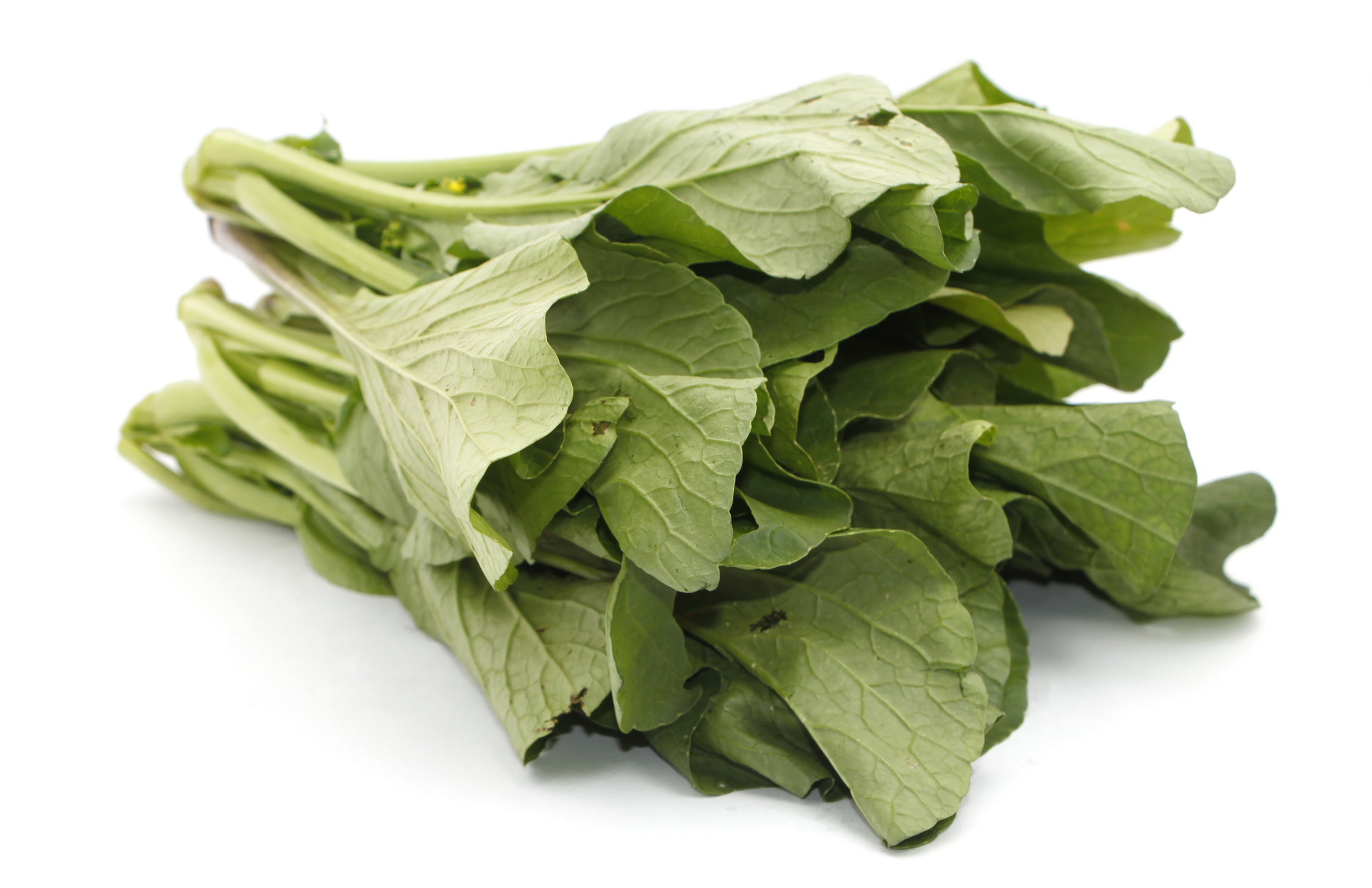
Never heard of mustard greens? That's probably because they're not super common. But I'm all for this green leafy veg having a comeback. Similar to kale and collard greens, mustard greens aren't too difficult to grow in a pot indoors and they have a lot of antioxidants inside — with just a more Dijon, peppery taste. (In other words, mustard fans will love it.)
Bok Choy

Bok choy was traditionally cultivated in China, which is why the green veggie is often found in Asian dishes. It's similar to cabbage, and can be boiled, sautéed, or added raw to dishes like salad to give it an extra crunch.
When growing bok choy indoors, make sure the soil is never too soggy and the pot it's planted in has plenty of room, since it's sizable (give it a good 20" in depth and width).
Eggplant

Mmm eggplant … It immediately conjures up thoughts of eggplant Parmesan, eggplant vegetable towers, and even ratatouille. Believe it or not, this hearty purple veggie isn't too difficult to grow indoors, in either a pot or hydroponic system. Just make sure to read up on its temperature needs first, as this veg loves warmer climates even more than the tomato plant.
Cabbage

Cabbage is another often overlooked veg — but it shouldn't be. Its potential nutritional benefits include reducing inflammation, boosting brain health, and helping to fight cancer. While it can be grown indoors, there is one small caveat: Gardeners suggest starting its growth indoors in March or April for about four weeks, and then moving the planter outside, if possible.
The no-fuss plant can withstand temps as low as 20 degrees Fahrenheit, so if it's moved to an outside spot on the porch or even in the garden, don't be alarmed by overnight frosts.
Zucchini

Looks like zoodles are gonna be on the dinner menu all week long … and I'm predicting no complaints from the kids!
Zucchini is one of those versatile veggies that's great for low-carb diets, since it can be used as a replacement for everything from spaghetti to lasagna noodles. Growing zucchini plants indoors is relatively easy too, and they look super pretty, since a beautiful orange flower blooms from each one.
Brussels Sprouts
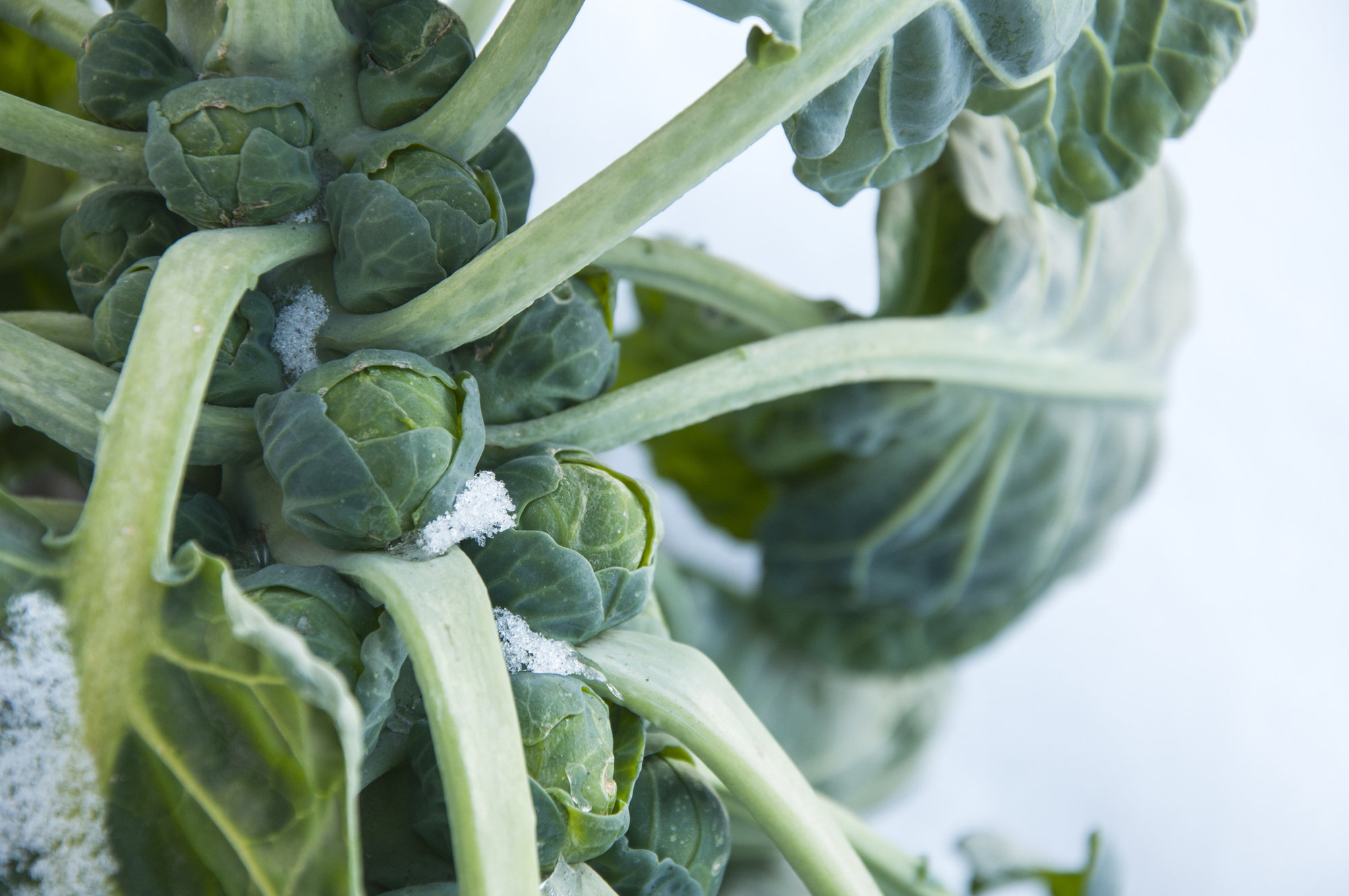
Ideally, Brussels sprouts are grown outside in the soil, as their stalks grow to be quite tall and sturdy. But if planted in a deep pot with plenty of soil, dwarf and semi-dwarf varieties can grow well on a back porch or even an indoor space that doesn't get too warm.
Make sure to plant them one to a pot and place them where they'll get at least six hours of sunlight a day, and then sit down and watch them grow. Once they're ready to be plucked, these little baby cabbages are delicious when roasted with olive oil, salt, and pepper.




